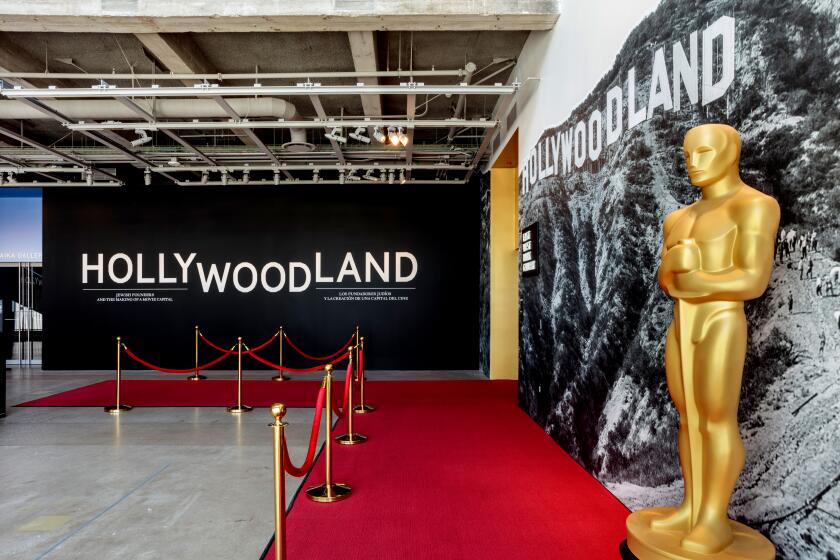Definitely One for the Archives : As cinema enters its second century, the world’s film preservationists meet to decide how to hold on to a precious cultural heritage.
When, in 1894, William Kennedy Laurie Dickson, one of Thomas Edison’s colleagues and perhaps the first film auteur , created the seconds-long independent movie “Edison Kinetoscopic Record of a Sneeze”--which cost roughly $24,000, including the cost of inventing all the technology--did he ever envision that, 101 years later, filmmakers would be spending nearly $200 million to throw together a little ditty called “Waterworld”?
When, in 1926, Italian filmmaker Guido Brignone fashioned a fantastical cinematic trip to the underworld titled “Maciste All’Inferno,” did he dream that his work would be screened for audiences in 1995, where it would be competing in the marketplace alongside the likes of “Tommy Boy” and “Tank Girl”?
When members of FIAF, the International Federation of Film Archives (trust us--the acronym works out just fine in its original French), convene in Los Angeles for an 11-day conference beginning Thursday, they probably won’t discuss those admittedly burning issues. Rather, their debates will lie largely with such academic concerns as film preservation and restoration.
It won’t all be so musty, however. Luminaries such as George Lucas, Steven Spielberg, Martin Scorsese and Quentin Tarantino will pay tribute to their efforts at a reception and program on April 24. Animation legend Chuck Jones will favor the group with an evening of recollections on April 26. On April 30, these academics from around the globe will trek out to Universal Studios, where they no doubt will discuss preserving the Christopher Lloyd videotapes shown to those in line for the Back to the Future ride.
More than 250 archivists from more than 50 countries--lands as far flung as Russia, Slovenia and Burkina Faso--will meet in Los Angeles; FIAF leaders are lending great import to the fact that they have brought the conference to Hollywood on this, the 100th anniversary of the motion picture. (It was in December, 1895, that the first movie audience--all of 33 people--assembled in Paris for an evening of short films.)
“This is an incredible opportunity to say, ‘This is a shared international heritage,’ and people ought to know that to preserve that heritage, we depend on collaborations that cross borders,” says Steven Ricci, FIAF member and head of Research and Study at the UCLA Film and Television Archive.
“This is a highly symbolic, highly charged meeting for FIAF,” says Gregory Lukow, FIAF member and director of the National Center for Film and Video Preservation at the American Film Institute. “They’re categorizing it as the most important in their history. The archival community is at a turning point in its history. The traditional role of archives has been to preserve the theatrical experience. Archives become like museums, and preserving the original theatrical experience is like preserving the largest possible artifact in a museum. But once cinema culture becomes a museum experience, that’s a dead end.”
Ricci adds, “The preservation process isn’t finished until the artifact is used in some way. We must democratize access to the cultural resources that belong to all of us. The public has contributed to making these things possible, and the public has to be able to recover that initial investment by seeing these films and doing things with them over time.”
To that end, FIAF will discuss how new technologies, such as CD-ROM, can enhance the cinema experience. They will also discuss how some technologies may be inappropriate for maintaining film’s heritage--videotape, for example, neither offers a high-quality duplication of the film image, nor does it seem to last for very long, yet archives in some countries keep their libraries on nothing but videotape.
As Michael Friend, FIAF member and director of the Academy Film Archives in Beverly Hills, says, VHS tapes--”rust on plastic,” he calls them--lose much of their luster within a few years, and most video technologies last for 7 to 15 years before they’re obsolete.
The directors’ tribute is a key element of the congress, Ricci says. “One characteristic of our best directors is that they are so incredibly film literate. . . . The viewing of films from the past has influenced the way in which these directors make their films.
“They will come and talk about how watching films--preserved by archives--influences the way they think about cinema. This is a pep talk for the archivists on the one hand, but this is also something that should be said to the public.”
*
It’s merely a happy coincidence that the FIAF conference coincides with UCLA’s seventh annual Festival of Preservation, but less of a coincidence that the festival includes restorations by FIAF members, united through Europe’s Project Lumiere, named after the French brothers responsible for the movies shown at that first public screening.
“Maciste All’Inferno,” screening Friday, will be the first of Project Lumiere programs in the Festival of Preservation. Subsequent screenings of films restored by the project will be Saturday (Abel Gance’s “Mater Dolorosa”), April 27 (the films of Alfred Machin), April 30 (early Danish films), May 2 (“Quo Vadis” and “The Golden Man”) and May 4 (the classic “The Cabinet of Dr. Caligari” and “The Tortured Woman,” both by Robert Wiene).
Friend said that the archivist has earned a more user-friendly reputation over the years. “Most of the archives started as little cults of cinema, there was like a secret brotherhood and you had to go through the initiation rites; they were extremely elitist in the original form. . . . Today, that audience is much larger.”
And the trend toward privatizing the arts, so popular in the U.S. Congress now, makes the broadening of audiences for archival materials even more imperative. “We’re realizing that the keys to our existence is to broaden access,” Friend says. “We have to find that larger audience to stay alive.”
More to Read
Only good movies
Get the Indie Focus newsletter, Mark Olsen's weekly guide to the world of cinema.
You may occasionally receive promotional content from the Los Angeles Times.






